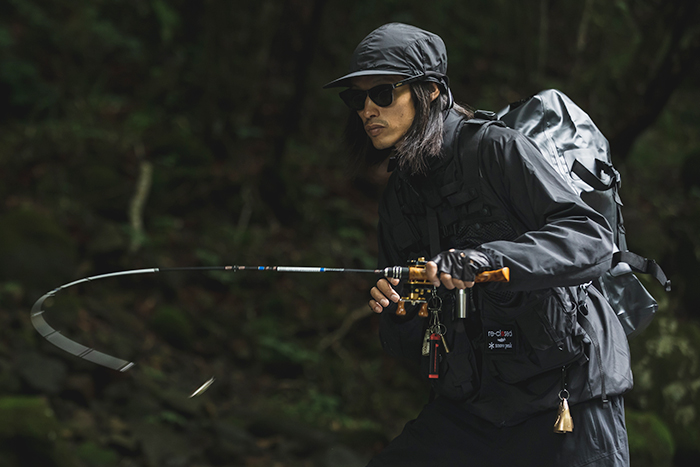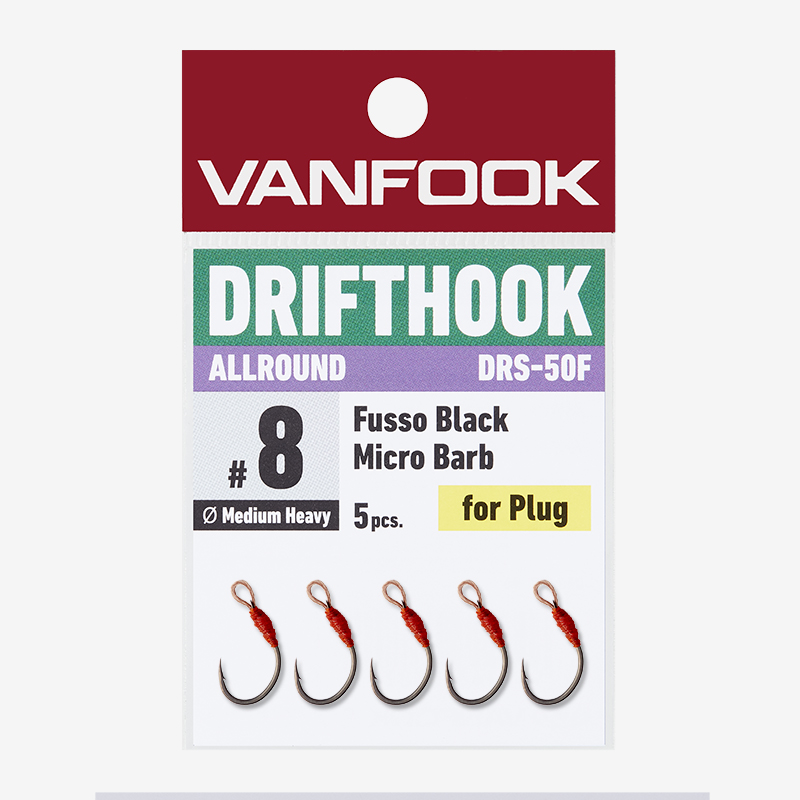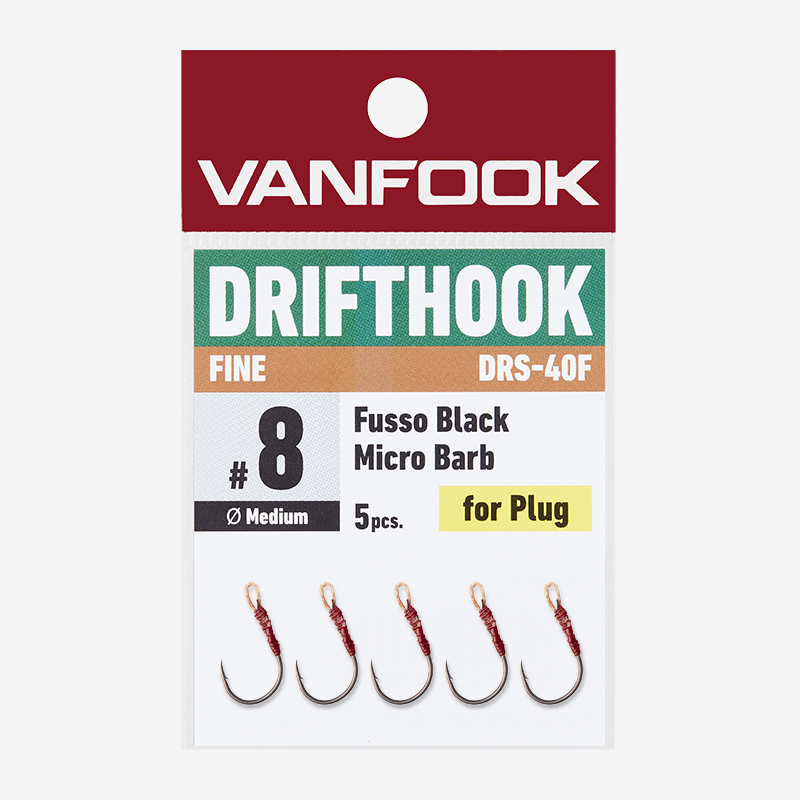Why I Choose “DRIFTHOOK” for Minnow Fishing.
Hokkaido in June–July, and New Zealand South Island in October
Hi everyone, I’m Masakazu Fukuyama, professional trout angler.
This season, I spent early summer (June to July) fishing in the mountain streams of Hokkaido, and later traveled south to New Zealand’s South Island for the start of their trout season in October.
Since the southern hemisphere runs opposite to Japan, October there feels like our early spring—right around the trout season opener. The mountains were still capped with snow, and rivers showed every shade of water—from milky, snowmelt-fed torrents to clear spring creeks and lake-connected systems with stable flow. I carefully chose each river depending on its clarity, water temperature, and accessibility.
This time, I want to talk about something that defines my fishing more than anything else: the hook, and specifically, how the Vanfook DRIFTHOOK performs in precision minnowing.
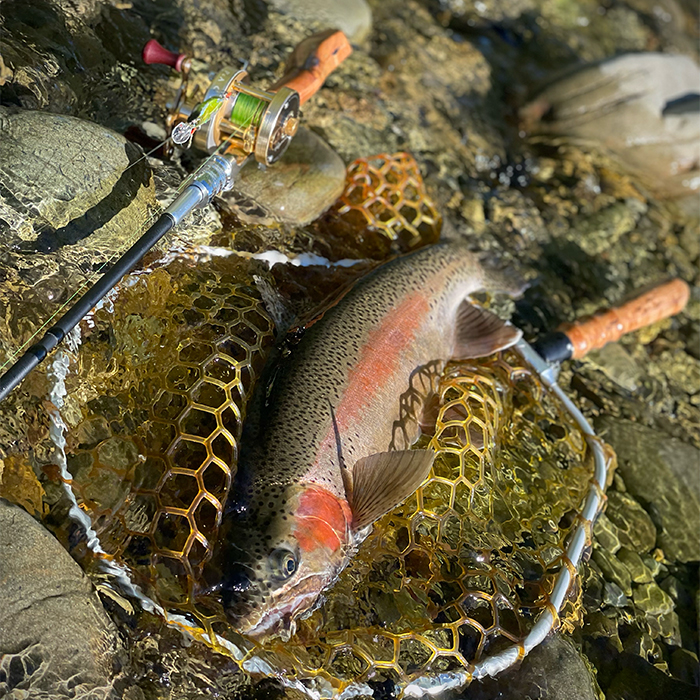
My main style centers around ultra-light 4~5 cm minnows, fished on either a bait-finesse stream setup or a 5~6 ft spinning rod, using pinpoint casts to place the lure right on the trout’s nose.
Rather than casting far into the main current, I focus on tight mountain streams where reading the small seams and pockets matters most. Each cast is a small test of intuition and experience — trusting that a trout is holding exactly where I believe it is.
In Japan, I sometimes use treble hooks for Sakuramasu or Yamame fishing, but when I travel overseas, I almost always switch to single hooks. There are two main reasons for this.
First, many countries and regions restrict or even ban the use of trebles.
Second, single hooks are kinder to the fish and less likely to come loose after the hook-set, especially when fighting larger trout.
Trebles may increase the initial hookup rate simply because of the number of points, but they also tend to snag the lure body, rocks, or even other parts of the fish, often causing the hook to pull free.
Single hooks, on the other hand, hold remarkably well once they’re in. Thanks to fluorine coating and micro-barb design, penetration is clean, retention is strong, and release is smooth — ideal for catch-and-release fishing that respects the trout and the environment.
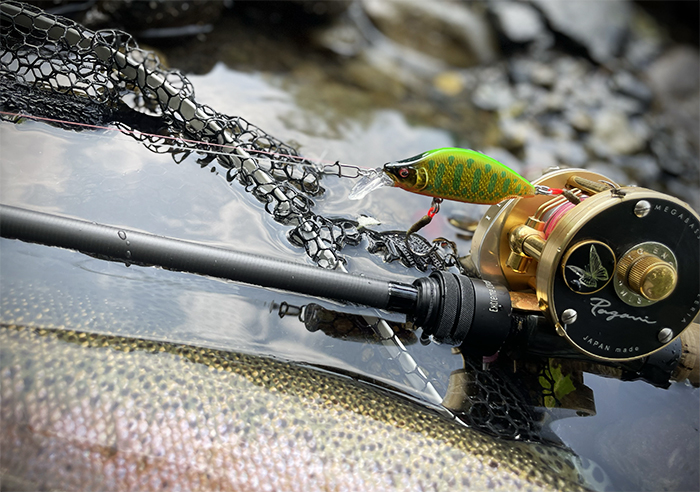
What is “DRIFTHOOK?”
The Superiority in Minnowing, and the Decisive Factor “Natural Synchronization.”
During these trips, I mainly used Vanfook DRIFTHOOK DRS-60F prototype models (#1, #2, #4).
The most impressive feature of this hook is how naturally it allows the minnow to swim.
Its weight balance, wire thickness, and especially its Lilian-shaped loop eye all synchronize perfectly with the lure’s movement.
Because of this “natural synchronization,” the minnow’s subtle rolling and twitching actions remain completely alive in the water.
When you’re fishing small 4~5 cm minnows in clear current, that delicate, natural motion makes all the difference — it’s everything. And honestly, the difference is real!
Even the slightest disruption in lure balance can kill the bite, but with the DRIFTHOOK, every cast tracks the water line cleanly and lifelike.
P.S.: The Lilian-style loop eye itself deserves special mention.
It’s an incredibly durable design that doesn’t get frayed or fuzzy even after long use.
Many traditional loop-eyes can start to “shaggy,” leading to tangling or weakening near the split ring, but this Lilian structure resists wear and tear. It’s smooth, long-lasting, and makes hook changes quick and effortless.
You can feel that every detail of this hook comes from Vanfook’s deep experience and relentless pursuit of functional beauty.
The fluorine coating adds effortless penetration, and the micro-barb design minimizes harm to the trout.
Even with light tension, the hook slides in with precision, holds firmly through the fight, and yet releases cleanly.
Especially in tough conditions or clear-water environments, this difference directly impacts your catch rate. Both in Hokkaido and New Zealand, I repeatedly witnessed how this hook improved my results.

For this trip, I also tested heavy-wire versions (#2 to #4).
They perfectly matched my style of targeting big trout with small minnows.
Even with thicker wire, the DRIFTHOOK keeps the minnow’s action natural while offering the strength and resilience needed to handle large fish in heavy current.
In fast New Zealand rivers, where rainbows and browns often use the flow to their advantage, I could fight confidently without worrying about hook failure or distortion.
It’s rare to find a heavy-wire hook that still preserves such fluid lure action — but the DRIFTHOOK bridges that gap beautifully
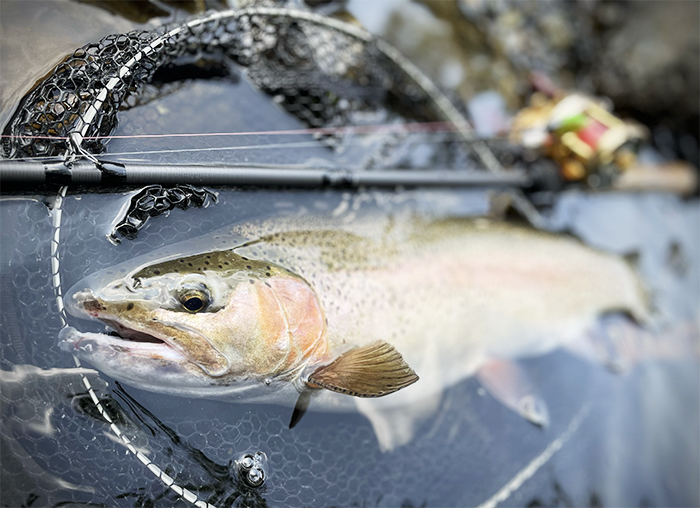
From Hokkaido’s rainbows and browns to Gifu’s Takahara River, Nagano’s Sai River, and even the winter Tone River area in Gunma — and beyond, to Tohoku, New Zealand, and the Rockies — the same principle applies everywhere:
you need a hook that preserves natural movement and ensures absolute reliability after the strike.
The Vanfook DRIFTHOOK fulfills both roles, and for me, it’s become an essential tuning component of my trout gear.
Keeping the lure’s life intact, conveying that natural pulse through the water, and at the same time treating the trout’s life with care—this is what modern trout fishing should be about.
In the clear streams of Hokkaido and the wild rivers of New Zealand, I once again felt the true value of a hook that never kills the lure’s motion.
A single hook can change the precision of your fishing, your connection with the fish, and even how you relate to nature itself.
The Vanfook DRIFTHOOK reminds me of that every time I fish.
It’s not just tackle — it’s a partner I’ll continue to rely on, wherever my trout journey takes me.
Profile
Masakazu Fukuyama
Pro Angler, VANFOOK Field Staff
From 1999 to 2000, he achieved double victories at the JSBA Halfpipe Chubu Regional Championships and the All-Japan Championships. In 2001, he was invited to compete at the international X-TRAIL JAM event held at Tokyo Dome, where he placed second in the Big Air competition. He signed contracts with multiple brands, including NIKE and DC SHOE CO. USA, and worked as a top snowboarder. He later became active as a fashion magazine model, taught himself clothing design, and established his own brand, “MofM,” laying the foundation for his current creative activities.
In April 2016, he signed an official pro contract with a fishing tackle manufacturer and began his career as a professional stream angler. Based in Gunma, he continues to fish for trout in streams both domestically and internationally, including Hokkaido, various locations across Japan, New Zealand, Canada, and North America. He values “fishing in harmony with nature,” feeling the natural flow and seasonal changes while engaging with trout. He shares his practice of catch-and-release and insights gained in the field, conveying the joy and depth of fishing. Currently serving as Director, he engages in brand activities, gear development, and video production while continuing to express the connection between people and nature through fishing.
Instagram
https://www.instagram.com/
lifestyle_of_masakazu_fukuyama
